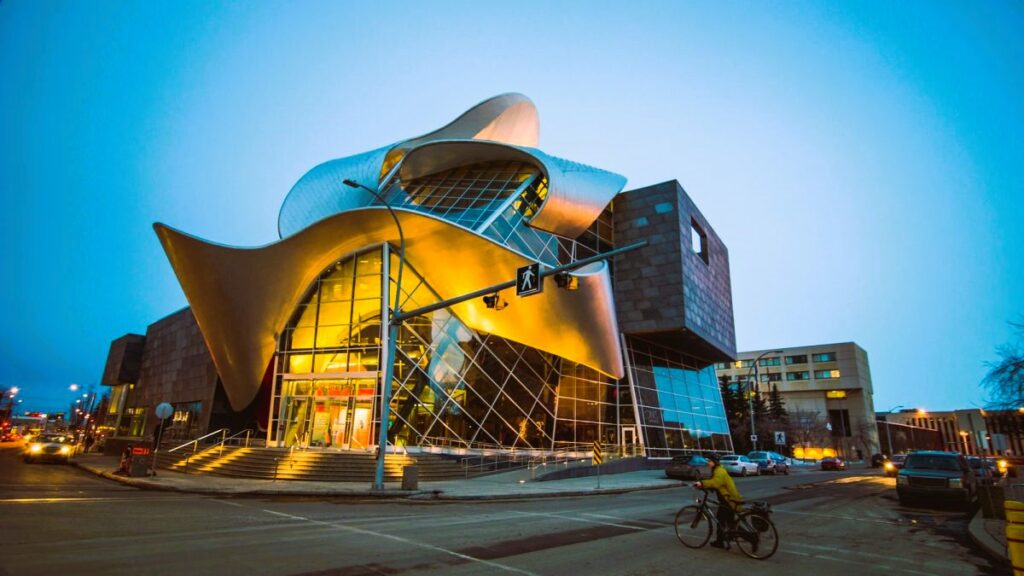Edmonton, the vibrant capital city of Alberta, Canada, stands as a testament to the confluence of history and modernity. Nestled along the North Saskatchewan River, Edmonton’s architectural landscape is a captivating tapestry that weaves together the city’s rich history and its forward-looking aspirations. In this exploration, we delve into the profound role of historical architecture in shaping Edmonton’s unique identity.
- Fort Edmonton: Pioneering the Past: At the heart of Edmonton’s historical identity lies Fort Edmonton, a replica of the original Hudson’s Bay Company post that stood in the area in the 19th century. This living history museum, consisting of four distinct eras, showcases the evolution of Edmonton from a fur trading post to a bustling city. The fort’s architectural elements transport visitors back in time, offering a tangible connection to the city’s pioneering days.
- Strathcona’s Historic Buildings: Preserving the Past: The Old Strathcona district, with its cobblestone streets and well-preserved historic buildings, serves as a living museum of Edmonton’s past. The Princess Theatre, built in 1914, and the Strathcona Hotel, dating back to 1891, stand as iconic examples of early 20th-century architecture. These structures not only preserve Edmonton’s architectural heritage but also contribute to the area’s vibrant cultural scene.
- Alberta Legislature Building: Symbol of Governance: Dominating the skyline along the riverbank, the Alberta Legislature Building is an architectural masterpiece that symbolizes the province’s governance. Completed in 1913, the Beaux-Arts style structure features majestic pillars, intricate stonework, and a stunning dome. The building’s design embodies a sense of permanence and stability, reflecting the enduring values of Alberta’s political landscape.

- High-Level Bridge: A Bridge Through Time: The High-Level Bridge, a prominent feature of Edmonton’s skyline, is not just a feat of engineering but also a historical icon. Constructed in 1912, the bridge’s grandeur and distinctive architecture have made it a symbol of connection between the north and south sides of the city. Lit up at night, the bridge adds a touch of nostalgia to Edmonton’s evenings, casting a warm glow on the river below.
- Art Deco Elegance: The Garneau Theatre: The Garneau Theatre, built in 1940, is a striking example of Art Deco architecture. With its sleek lines, geometric patterns, and iconic marquee, the theater reflects the elegance and modernity of the era. Although it has undergone various transformations, the Garneau Theatre stands as a reminder of Edmonton’s embrace of architectural trends that swept the nation during the mid-20th century.
Conclusion:
Edmonton’s historical architecture serves as more than just a collection of buildings; it is a dynamic force shaping the city’s identity. From the pioneer days of Fort Edmonton to the enduring legacy of the Alberta Legislature Building, each structure tells a story of Edmonton’s growth, resilience, and cultural evolution. As the city continues to expand and modernize, the preservation and celebration of its historical architecture become crucial in maintaining a sense of continuity and connection with the past.
For further exploration of Edmonton’s historical architecture and its role in shaping the city’s identity, refer to reputable sources such as Wikipedia. These platforms offer comprehensive insights into the historical and cultural significance of Edmonton’s architectural heritage.
